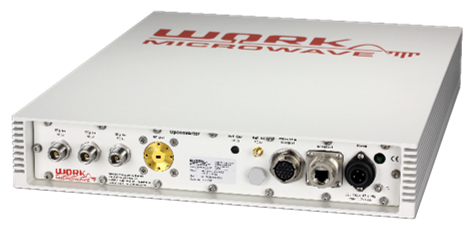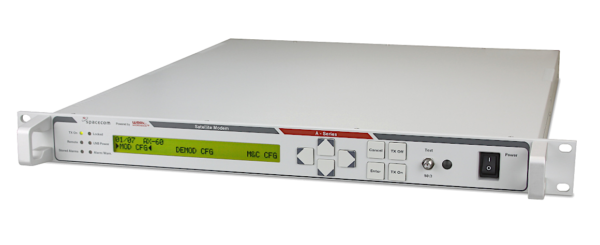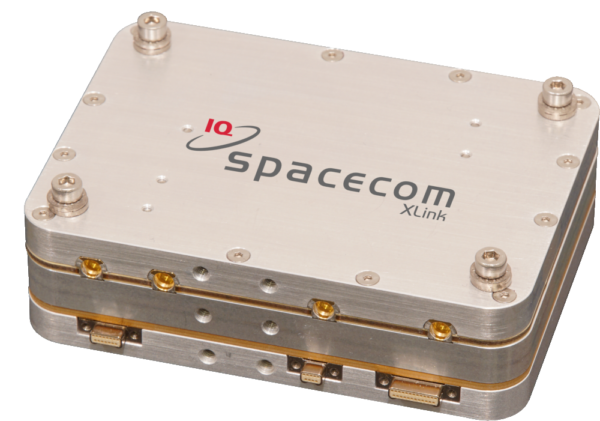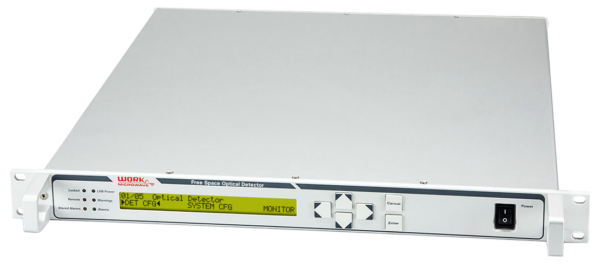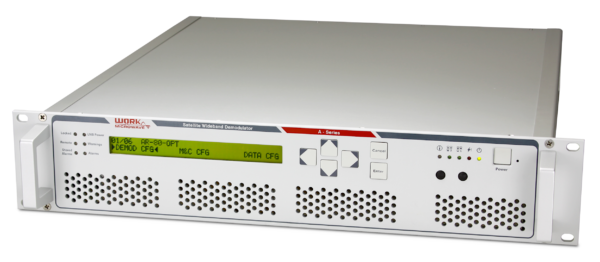WORK Microwave will demonstrate its latest space technology solutions at SATELLITE 2022, a key event for the space and satellite industries. Using WORK Microwave’s solutions, operators can cross the edges between space and ground, RF and digital, optical and digital, and virtual and hardware on ground stations.
With more than 35 years of experience in satellite ground-segment equipment, WORK Microwave’s solutions are deployed in real-world missions with LEO and MEO constellations as well as with optical down-to-Earth links, including new space, deep space, government, and communication applications. Highlights at the show will include WORK Microwave’s groundbreaking deep space converter, V-band block upconverter, and optical receiver and detector.
Ka-Band Deep Space Converter
At SATELLITE 2022, WORK Microwave will show deep space converters optimized to maintain stable communication links to interplanetary missions. The up- and downconverters are being used by the European Space Agency’s European Space Operations Center for its deep space network. The converters are enhanced for telemetry, tracking, and command operations of different categories of deep space missions, offering high stability and reliability for deep space distances.
V-band, Triple-Channel Upconverter
As one of the industry’s first SatCom solutions providers to support the full V-band spectrum, WORK Microwave leads the industry in helping satellite operators expand their capacity to keep pace with the demanding communications requirements fuelled by bandwidth-intensive broadcast and data services.
At SATELLITE 2022, attendees can see WORK Microwave’s new V-band upconverter, which is perfect for early laboratory testing. The upconverter has already been deployed by global satellite operators to support secure, high-performance communications projects.
One-Stop-Shop Solution With AX-60 IP Modem and IQ Spacecom’s XLink Transceiver
WORK Microwave will demonstrate an end-to-end CubeSat solution at SATELLITE 2022. The way it works is simple: From space, an XLink transceiver from IQ Spacecom connects seamlessly with the AX-60 IP modem from WORK Microwave. Both platforms connect to IP networks and provide easy-to-use, straightforward connectivity. The solution allows operators to reliably perform telecommand and telemetry transmission tasks to and from satellites. As one of the world’s first end-to-end CubeSat solutions, it supports satellite communication for both the ground and space segments with guaranteed compatibility. In addition, the solution features space communication waveforms according to CCSDS Recommended Standards (Blue Books) 131.0 and 231.0.
At the heart of the solution is WORK Microwave’s AX-60-S02190 CCSDS TM/TC Modem, a ground station modem for CCSDS 131.0- and 231.0-based mission communication to IQ Spacecom XLink space segment transceivers. The modem features a CCSDS 131.0-B-3-compliant downlink, CCSDS 231.0-B-3-compliant uplink, symbol rates of 10 ksps up to 75 Msps, and IQ constellation output with a proven and flexible A-Series SDR architecture.
Optical Ground Station Receiver and Detector
WORK Microwave’s optical ground segment solutions use leading-edge optical technology. The future-proof solutions can transfer over a secure laser downlink when very high data-throughput rates are needed. At SATELLITE 2022, WORK Microwave will demonstrate the following solutions:
- FSOD1 Free Space Optical Detector: The FSOD1 is a fiber-coupled optical detector for the reception of optical free space communication. The detector features a highly responsive InGaAs avalanche photodiode (APD) with fiber coupled input. The amplified and limited output makes it most suitable for receiving hard decision on-off-keying signals. Built in a 19-inch rack-mount housing, the detector includes both a front-panel user interface and network access via SNMP and HTTP interface, assuring easy integration into satellite ground station infrastructures.
- AR-80-OPT Optical Multi-Mission Receiver: The AR-80-OPT receiver is dedicated to supporting the processing of optical direct-to-Earth links. Designed for multimission support, it enables effective ground station design. Optical On-Off-Keying (O3K) and High-Photon-Efficiency (HPE) transmissions can be processed via a common input that operates based on either hard-decision decoding or the processing of logarithmic-likelihood-ratios (LLR).


